Disconnect the wiring harness from the fluid level sensor and unscrew the two nuts securing the brake master cylinder (see Removing the brake master cylinder).
Inside, under the instrument panel..

... with a screwdriver we pry the spring retainer of the finger of the pusher of the vacuum booster to the brake pedal (for clarity, the instrument panel and steering column are removed) …
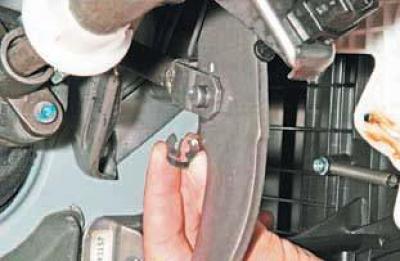
...and take it off.
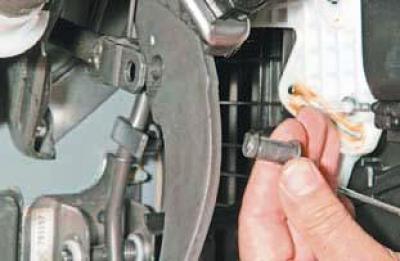
We take out the finger from the holes of the pedal and the eye of the pusher.
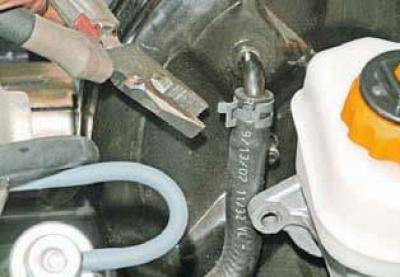
Using pliers, we unclench the clamp that fastens the vacuum supply hose from the intake manifold to the vacuum booster..
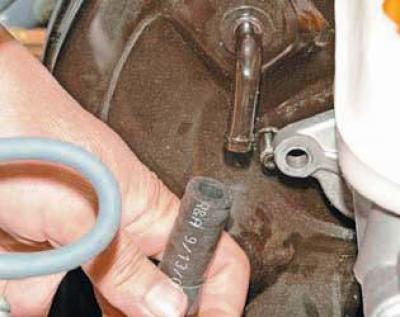
... and remove it from the fitting.
Carefully bending the brake pipes, without disconnecting them from the master cylinder, so that air does not enter the hydraulic brake system..
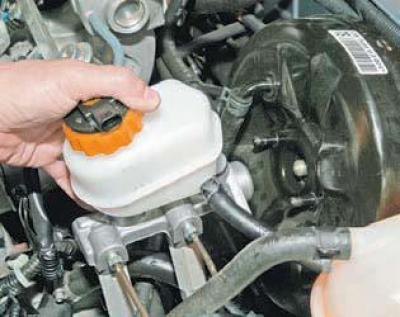
... we remove the main brake cylinder (complete with tank) from the vacuum booster housing.
The connection of the master brake cylinder with the vacuum brake booster is sealed with a rubber gasket (see Removing the brake master cylinder).
We take out the rubber gasket from the hole of the vacuum booster and check its technical condition.
If necessary, replace the gasket with a new one.
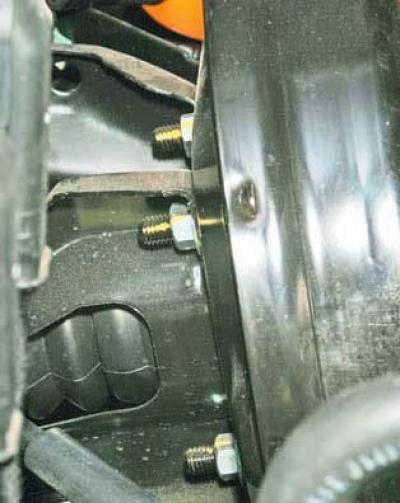
Using the "12" key, we unscrew the four nuts securing the vacuum booster housing to the brackets (the fourth nut is not visible in the photo).
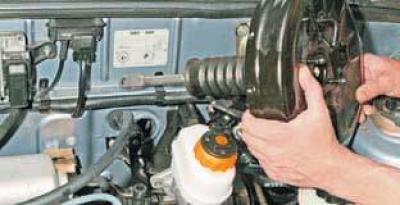
We remove the booster pusher from the hole in the bulkhead...... and remove the vacuum booster from the engine compartment.
We remove the corrugated protective cover from the pusher.
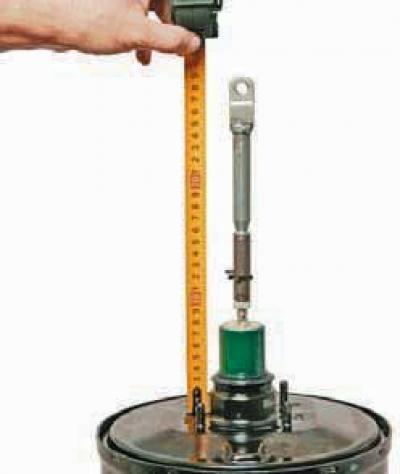
We check the size between the axis of the pusher hole and the mating plane of the vacuum booster, which should be 278.5 mm.
To get the correct size..
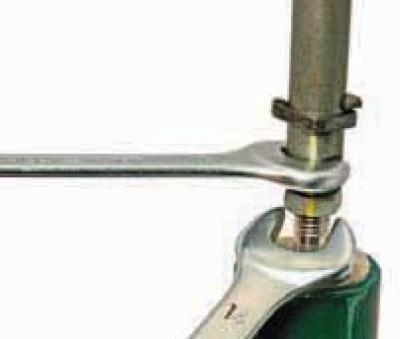
... with the "14" key, unscrew the lock nut, holding the pusher adjusting sleeve with the "13" key.
By rotating the sleeve, we achieve the desired size, after which we tighten the lock nut.
If there is a need to inspect or replace the pusher..
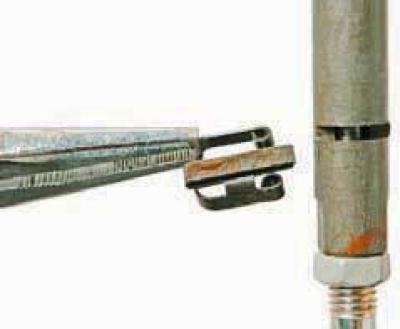
... use pliers to remove the spring retainer from the groove of the bushing..
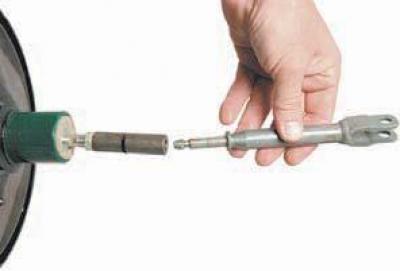
... and take out the pusher.
Install the brake booster in reverse order.
